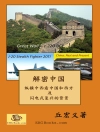This work focuses on the ideological intertwining between Czech, Magyar, Polish and Slovak, and the corresponding nationalisms steeped in these languages. The analysis is set against the earlier political and ideological history of these languages, and the panorama of the emergence and political uses of other languages of the region.
Cuprins
Foreword; P.Burke Author Preface Introduction Language in Central Europe: An Overview The Broader Linguistic and Cultural Context of Central Europe PART I: CENTRAL EUROPEAN POLITICS AND LANGUAGES IN THE LONG NINETEENTH CENTURY The Polish Case: From Natio to Nation The Hungarian Case: From Natio to the Ersatz Nation-state The Czech Case: From the Bohemian Slavophone Populus to Czech Nationalism and the Czechoslovak Nation The Slovak Case: From Upper Hungary’s Slavophone populus to Slovak nationalism and the Czechoslovak nation PART II: NATIONALISMS AND LANGUAGE IN THE SHORT TWENTIETH CENTURY The Polish Nation: From a Multiethnic to an Ethnically Homogenous Nation-State The Hungarian Nation: From Hungary to Magyarország The Czech Nation: Between Czechoslovak and Czech Nationalism The Slovak Nation: From Czechoslovakia to Slovakia, Conclusion Bibliography
Despre autor
TOMASZ KAMUSELLA is Senior Lecturer at the University of Opole, Poland, and focuses on the issues of language politics, nationalism, ethnicity, and European integration. Recent books include
Silesia and Central European Nationalisms and (co-edited in two-volumes)
Nationalisms Across the Globe. In 2002-2006, he researched this new monograph,
The Politics of Language and Nationalisms in Modern Central Europe, at the European University Institute, Florence; the John W Kluge Center at the Library of Congress, Washington DC; the Institute for Human Sciences, Vienna; and the Herder-Institut, Marburg, Germany.












